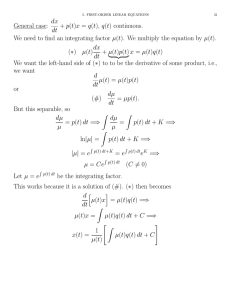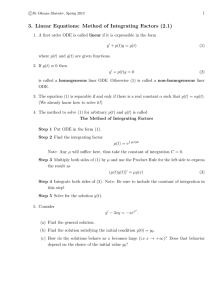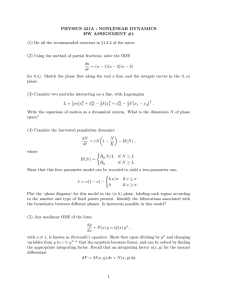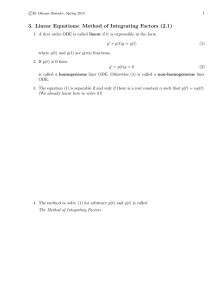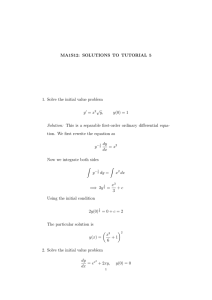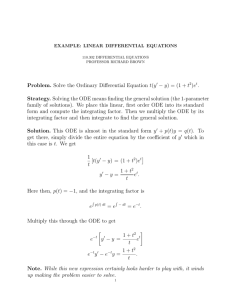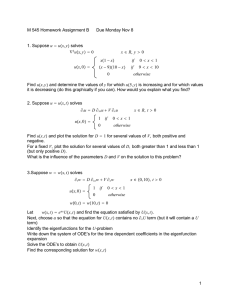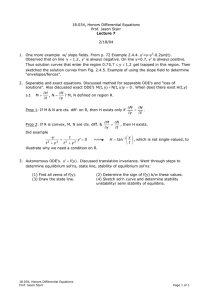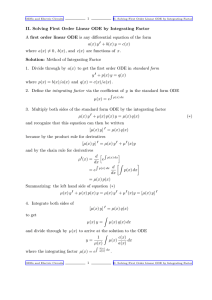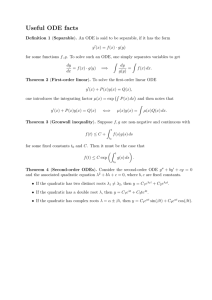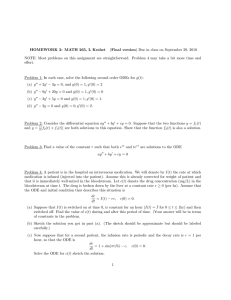Slopefield Worksheet
advertisement
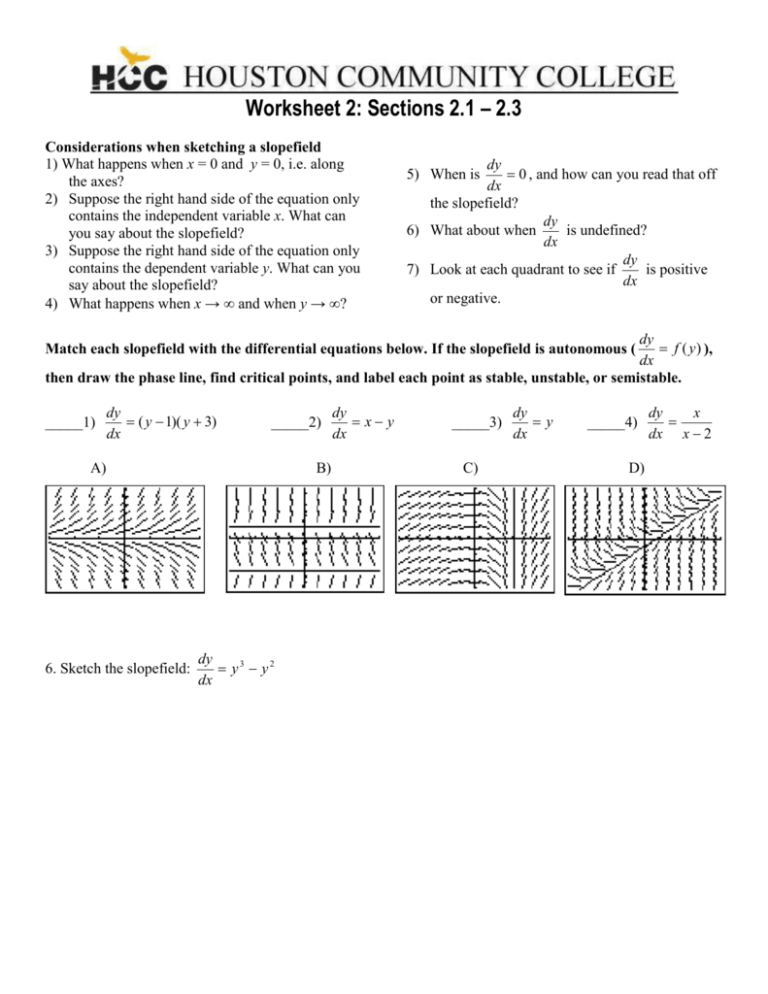
Worksheet 2: Sections 2.1 – 2.3 Considerations when sketching a slopefield 1) What happens when x = 0 and y = 0, i.e. along the axes? 2) Suppose the right hand side of the equation only contains the independent variable x. What can you say about the slopefield? 3) Suppose the right hand side of the equation only contains the dependent variable y. What can you say about the slopefield? 4) What happens when x → and when y → ? dy 0 , and how can you read that off dx the slopefield? dy 6) What about when is undefined? dx dy 7) Look at each quadrant to see if is positive dx or negative. 5) When is dy f ( y ) ), dx then draw the phase line, find critical points, and label each point as stable, unstable, or semistable. Match each slopefield with the differential equations below. If the slopefield is autonomous ( _____1) dy ( y 1)( y 3) dx _____2) A) 6. Sketch the slopefield: B) dy y3 y2 dx dy x y dx _____3) C) dy y dx _____4) D) dy x dx x 2 Separable 1st–order ODE’s can be written in the form dy To solve, rewrite the equation in the form f x, y g x h y dx dy g ( x)dx and integrate each side of the equation. h( y ) Solve for y, if possible. 7) dy y 1 / 2 (1 x ) , Initial Condition: y(0) = 1 dx Linear 1st–order ODE’s may be written in the form dy P( x) y Q( x) dx P ( x ) dx To solve, multiply each term of the equation by an integrating factor of the form I(x) = e 8) Write the equation in the form shown above, introduce the integrating factor, and solve: t ln t 9) Solve the linear 1st–order BVP. t dr r tet dt dy 2 y t 3 , Boundary Value: y(1) = 0 dt For each of the following problems, first decide if the equation is linear, separable, or both. Try to find the general solution. 10) y e x 2 y , y 11) y y x 3 12) y 13) 1 y2 cos 2 x dy 2 xy ln( x)e x dx 2
